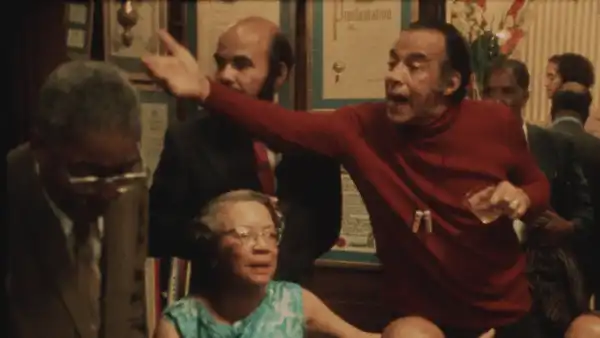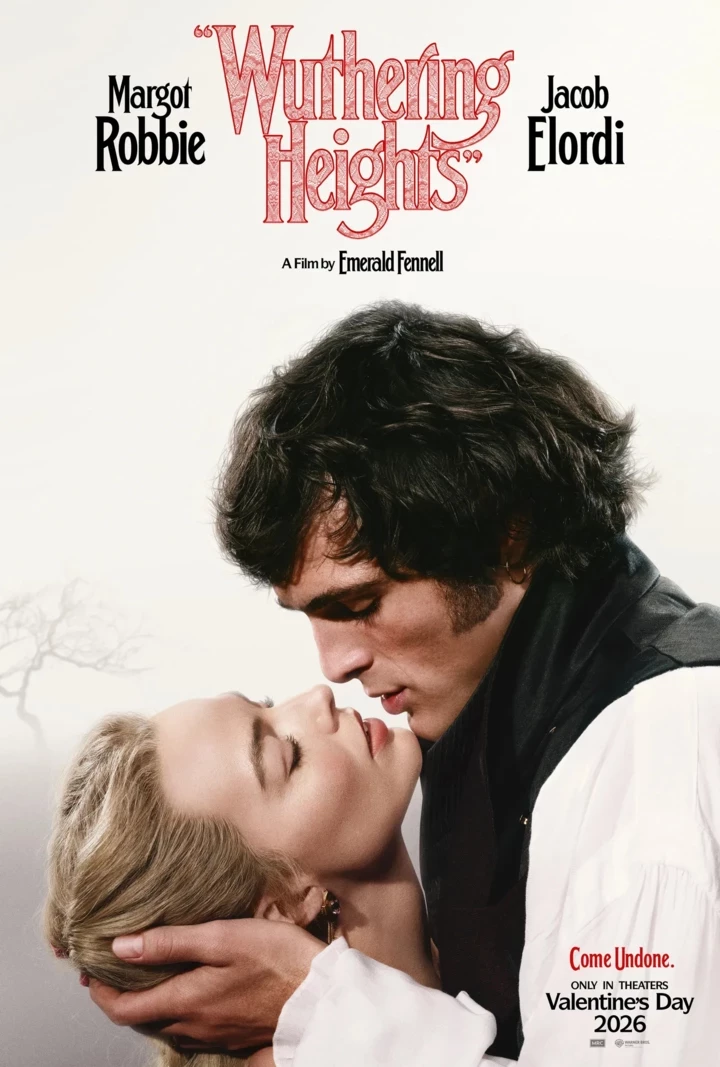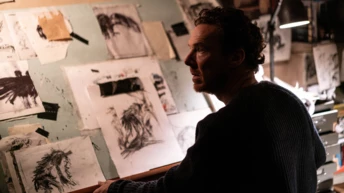
Save this storySave this storySave this storySave this story
A significant misstep within classic Hollywood was its intense dedication to fictional narratives while largely neglecting nonfiction, which was primarily confined to “newsreels” in the early days. Consequently, much of the dialogue in sound films consisted of clever banter crafted by screenwriters, leaving it to independent filmmakers to forge creative nonfiction as a foundation for authentic dialogue. This endeavor evolved into a pivotal project for modern cinema, exemplified by such remarkable dialectical works as “Chronicle of a Summer,” “Portrait of Jason,” “Shoah,” and Frederick Wiseman’s entire body of work. Let’s include one more, as I’ve recently viewed an extraordinary talking picture, one of the finest cinematic accomplishments in creative nonfiction I’ve ever encountered: “Once Upon a Time in Harlem,” an oral chronicle of the Harlem Renaissance filmed by director William Greaves in 1972. Regrettably, it’s currently not feasible for it to be widely shown.
This is because the film is still in development. It exists presently as a preliminary version running at ninety-eight minutes, and its completion relies on an ongoing fundraising effort. Segments of the evolving work have been displayed publicly at the Metropolitan Museum of Art and at moma. I had the opportunity to view the preliminary version at a recent private screening, and I’m convinced that had Greaves been able to finalize the film shortly after capturing its content, it would have irrevocably shaped history, and for the better. This movie would have elevated the Harlem Renaissance and its leading figures to a considerably more prominent status, during a period that often overlooked the movement’s pioneers—as well as emerging Black artists, a situation Greaves himself experienced. Despite a distinguished career as a documentary filmmaker, Greaves encountered indifference and rejection for his more ambitious projects. His masterpiece, “Symbiopsychotaxiplasm: Take One,” is a remarkable fusion, a fictional drama ingeniously woven into the real-world circumstances of its creation. Filmed in 1968 and completed in 1971, it was turned down by the Cannes Film Festival and never secured distribution. Its achievement wasn’t fully recognized until 1991, when it was screened at the Brooklyn Museum.
In “Once Upon a Time in Harlem,” Greaves pioneers a method of nonfiction filmmaking that is equally innovative and captivating, yet remains explicitly informative. He documented a series of interviews featuring noteworthy figures from the Harlem Renaissance and then organized—and filmed—a gathering for a broader range of participants at Duke Ellington’s residence in Harlem. The footage was initially intended for a film centered on the Harlem Renaissance titled “From These Roots,” which Greaves did finish in 1974, but he ultimately created it almost entirely using archival images. The interviews and conversations were set aside as Greaves deliberated on their potential use. He revisited the footage over the years, eventually commencing work on it towards the end of his life, until his declining health prevented him from continuing. Greaves passed away in 2014, at eighty-seven, with the film unfinished but with the conviction that the footage he had captured was his most significant work. His widow, Louise Archambault Greaves, persisted with the project until her own passing in 2023, at ninety; now Greaves’s son David (one of the project’s cameramen) and David’s daughter Liani are progressing with it. (David is credited as the director of the version I saw, and Liani is a co-producer, along with Anne de Mare.)
The film’s form, noticeable even in its incomplete state, is as naturally elegant as its topic is pressing and its dialogues are impassioned. The party (which spanned approximately four hours) provides the framework for the edit, serving as a straightforward structure with ample space for incorporating other interviews and historical clips and stills. The movie’s intellectual foundation—consistent with Greaves’s modernist sensibilities—emerges from the practical realities of its creation, specifically, a merging of celebration and intellectual exchange, a cohesion of purpose and dialectical debates. The conversational tone on screen is befitting of both its intimate context and its broader social role. It’s a dialogue among acquaintances, but acquaintances who are acutely aware that the event is simultaneously creating and commemorating history. Feelings run as intensely as style, and sincerity and passion intertwine with humor, imbuing anecdotes and reflections with pride and intent, as well as sorrow and indignation. When reflecting on “Once Upon a Time in Harlem,” I’m inclined to simply recall and quote as much as I can from memory, as the dialogue is exquisite—vivid stories, sparkling wit, radiant eloquence, profound thoughts, melancholy assessments, the inventive strength of literary art in flight—all enveloped in an atmosphere of hard-won solidarity.
The participants encompass an array of prominent creative individuals, including the ragtime artist Eubie Blake; the painters Romare Bearden and Aaron Douglas; the photographer James Van Der Zee; the poet and author Arna Bontemps; the writer, painter, and dancer Richard Bruce Nugent; and the editor and society columnist Gerri Major. Others played critical roles behind the scenes in the movement: the librarians Regina Andrews and Jean Blackwell Hutson; the actor-managers Leigh Whipper and Irvin C. Miller, and the playwright-producer Abram Hill; the scholars John Henrik Clarke and Nathan Huggins; and Ida Mae Cullen, Countee Cullen’s widow. Some participants hadn’t seen each other in fifty years. Many were aged, some remarkably so (Whipper was ninety-six); and several of the essential creators at the heart of the narrative had passed away—some long ago, others, such as Langston Hughes, only a few years prior.
The Harlem Renaissance—the theme that had united everyone for discussion—is characterized in the film by Major as the initial recognition of Black people as creative beings; by another individual, as validating the brilliance of Black people; by Bontemps as “a prism” reflecting the Black experience across time; and by George Schuyler as not a renaissance but an “awakening.” Personal reflections frequently revolve around individual experiences that shed light on subjects of the widest historical and political importance, extending well beyond particular works of art. Blake disclaims a widely propagated rumor that he would never shake a white man’s hand, clarifying that he simply never extended his own hand first, to avoid potentially being snubbed. Whipper recounts an instance where the renowned dancer Bill (Bojangles) Robinson was snubbed in precisely this manner by Charles Lindbergh, only for Jimmy Walker, then the mayor of New York, to salvage the situation by promptly shaking Robinson’s outstretched hand himself. Whipper also discusses his bond with the poet and writer Paul Laurence Dunbar, who died in 1906, at thirty-three; the two men had been neighbors and fishing companions. Blake describes the commanding stage presence of the tragically short-lived actress Florence Mills. The artist Ernest Crichlow evokes the memory of the sculptor Augusta Savage, whose studio, located in a Harlem basement—among furnaces and piles of coal—was a sanctuary of enlightenment and a hub of creative energy.
That studio is one of numerous places, formal and informal, mentioned throughout the film as meeting spots where artists, activists, journalists, and other prominent figures convened, and where a diverse range of activities were encouraged, sustained, funded, and brought to the attention of the public. Publications such as The Crisis, Opportunity, and The Messenger are cited as platforms where poets like Langston Hughes and Cullen were published, and where Douglas was commissioned to produce the covers. Black authors also found opportunities at various Black-owned newspapers, including the Amsterdam News. (Money mattered, whether obtained through employment or through the support of the businesswoman A’Lelia Walker or the “gangster philanthropist” Casper Holstein.) The 135th Street branch of the New York Public Library—where Andrews was the city’s first Black head librarian—functioned as a center for writers, the unofficial daytime workspace for Cullen, Claude McKay, and others. Andrews’s apartment, located at 580 Saint Nicholas Avenue, served as a type of salon for authors and artists, and Major’s role as a society columnist rendered her gatherings a crucial center of the Black élite.
Bontemps, who, beyond his writing, served as a librarian and educator, offers some insightful historical observations, stating that the Harlem Renaissance commenced with three happenings: Marcus Garvey’s initial conference in Harlem in August 1920; the debut of the musical “Shuffle Along,” featuring music by Blake and lyrics by Noble Sissle, in May 1921; and, in June of that year, the initial publication of a poem by Langston Hughes (“The Negro Speaks of Rivers,” which appeared in The Crisis). This convergence of literature, politics, theatre, and music, contained within a single year, encapsulated the expansive scope of the Harlem Renaissance, its sources of inspiration, and its lasting effects.
The participants openly discuss the racism prevalent in those formative years, including the widespread lynchings and the massacres of Black individuals in Tulsa, East St. Louis, and Elaine, Arkansas. They recall the community’s responses to these atrocities, including the Silent Parade of 1917, in which thousands marched along Fifth Avenue. Memories are shared of the infuriating everyday reality of racial insults and exclusions, of the daring scheme to integrate the Copacabana, and the unaddressed injustices endured by previous generations; Whipper recounts the Ku Klux Klan’s threats against his father, a lawyer and state legislator in South Carolina, following Reconstruction.
Despite the overarching shared sense of purpose, there was also division within the Harlem Renaissance. In the filmed discussions, people recognize that the Harlem Renaissance wasn’t a monolithic movement but had “many intellectual centers” and functioned more as a “forum.” Richard Moore, an author and activist, countered Garvey’s conviction in the separation of the races and the primacy of Black Americans in African politics. In 1926, Schuyler published his essay “The Negro-Art Hokum” in The Nation; the subsequent week, the magazine published Hughes’s pointed response, “The Negro Artist and the Racial Mountain.”
This exchange was an element of a thriving realm of extraordinary language. The Harlem Renaissance was abundant with poetry and song—and with performance, as preserved in Greaves’s footage, which showcases numerous spontaneous, thrillingly theatrical renditions of poems by Bontemps, Hughes, Cullen, and McKay. Sissle sings one of his compositions in the film, and there’s even a monologue from a Hollywood production (“Mission to Moscow,” from 1943) where Whipper portrayed Haile Selassie; among friends, thirty years later, he delivers the speech from memory. Likewise, the scores of individuals Greaves interviews in the film aren’t conveying a singular, uniform account of the Harlem Renaissance but a polyphonic transmission of it. Sharing the narratives of their lives, attesting to pivotal moments, and reflecting on their actions and observations, they offer not a retrospective glance but a contemporary reincarnation, a renewal of a renaissance.
Greaves, who was born in Harlem in 1926 and was raised there, was himself an inheritor of the Harlem Renaissance, steeped in the cultural currents that emanated from it. By exploring the movement, Greaves (as the film itself illustrates) was investigating himself. Perhaps this is why, while he encountered little difficulty in completing the detached, encyclopedic documentary “From These Roots,” he struggled with the interview and discussion footage. He was contending both with history and with his own existence. The Greaves family hopes to release the film in time for his hundredth birthday in October 2026. “Once Upon a Time in Harlem,” when it’s completed and widely distributed, will find its place as a critical record of history and as the film of a lifetime. ♦
Sourse: newyorker.com







